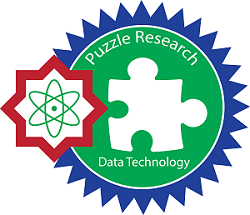Analisis Hubungan Antara Jumlah Bus dan Jumlah Penumpang Menggunakan Unsupervised Learning
Analysis of Passenger and Bus Numbers Using Unsupervised Learning
DOI:
https://doi.org/10.57152/malcom.v5i3.2005Keywords:
Fuzzy C-Means, Gaussian Mixture Model, K-Means, Sepctral Clustering, Unsupervised LearningAbstract
Hubungan antara jumlah bus dan jumlah penumpang merupakan aspek penting dalam analisis transportasi perkotaan. Namun, pola distribusi dan kelompok data yang terbentuk sering kali tidak merata, sehingga menyebabkan ketidakseimbangan dalam hubungan tersebut. Penelitian ini bertujuan untuk mengidentifikasi pola distribusi dan mengelompokkan data jumlah bus dan penumpang menggunakan pendekatan unsupervised learning. Metode yang diuji coba terdiri dari empat model yaitu K-Means, Fuzzy C-Means (FCM), Gaussian Mixture Model (GMM), dan Spectral Clustering. Keempat model tersebut dibandingkan untuk mengukur seberapa baik model dapat mengelompokkan data dan mengungkap hubungan antara jumlah bus dan jumlah penumpang. Keempat model akan dievaluasi menggunakan Calinski-Harabasz Index, Silhouette Score, dan Davies-Bouldin Index untuk menemukan klaster optimal. Berdasarkan uji coba keempat model clustering menggunakan ketiga matriks evaluasi, semua model menunjukkan klaster optimalnya adalah 2 namun model K-Means memberikan kinerja terbaik dalam mengelompokkan data karena model K-Means memiliki nilai terbaik untuk setiap metrik evaluasi tersebut. Skor model K-Means pada Silhouette Score sebesar 0.5175, nilai model K-Means pada Davies-Bouldin Index sebesar 0.7241, dan skor untuk K-Means terhadap Calinski-Harabasz Index sebesar 1414.3874. Klaster 1 merepresentasikan jumlah bus dan jumlah penumpang yang tinggi sedangkan Klaster 2 merepresentasikan jumlah penumpang dan jumlah bus yang rendah.
Downloads
References
H. N. V. Do, A. Fujiwara, T. A. H. Nguyen, and C. Do, “Investigating influential factors on pick-up/drop-off location choices for school bus services from parents’ perspective: A case study in Hanoi, Vietnam,” Asian Transport Studies, vol. 11, Jan. 2025, doi: 10.1016/j.eastsj.2025.100157.
Y. Hakiminejad, E. Pantesco, and A. Tavakoli, “Public transit of the future: Enhancing well-being through designing human-centered public transportation spaces,” Transp Res Interdiscip Perspect, vol. 30, Mar. 2025, doi: 10.1016/j.trip.2025.101365.
F. Farzadnia and J. Lysgaard, “Solving the service-oriented single-route school bus routing problem: Exact and heuristic solutions,” EURO Journal on Transportation and Logistics, vol. 10, Jan. 2021, doi: 10.1016/j.ejtl.2021.100054.
T. Gu, W. Xu, H. Liang, Q. He, and N. Zheng, “School bus transport service strategies’ policy-making mechanism – An evolutionary game approach,” Transp Res Part A Policy Pract, vol. 182, Apr. 2024, doi: 10.1016/j.tra.2024.104014.
R. Kaewkluengklom, F. Kurauchi, and T. Iwamoto, “Application of passenger flow estimation based on network centrality indicators to reorganise the Shizuoka bus network,” in Transportation Research Procedia, Elsevier B.V., 2025, pp. 1185–1204. doi: 10.1016/j.trpro.2024.12.120.
S. Tao, F. Rowe, and H. Shan, “Nonlinearities and threshold points in the effect of contextual features on the spatial and temporal variability of bus use in Beijing using explainable machine learning: Predictable or uncertain trips?,” J Transp Geogr, vol. 123, Feb. 2025, doi: 10.1016/j.jtrangeo.2025.104126.
S. S. Turay, C. A. Adams, and A. Ababio-Donkor, “Application of Multi-Class Machine Learning Algorithms To Predicting Commuter Preference & System Benefits of an Integrated Public Transport: the case of a proposed dedicated bus lane system,” Transportation Engineering, p. 100319, Mar. 2025, doi: 10.1016/j.treng.2025.100319.
M. Rahal, B. S. Ahmed, G. Szabados, T. Fornstedt, and J. Samuelsson, “Enhancing machine learning performance through intelligent data quality assessment: An unsupervised data-centric framework,” Heliyon, vol. 11, no. 4, Feb. 2025, doi: 10.1016/j.heliyon.2025.e42777.
Sriwahyuni and R. Passarella, “Analisis Model Prediksi Untuk Layanan Bus Sekolah Jakarta Menggunakan Pendekatan Machine Learning,” Indonesian Journal of Computer Science, 2024.
P. Shobiroh Utami, “Analisis Model Clustering Kecelakaan Lalu Lintas Di Kota Palembang Menggunakan Pendekatan Machine Learning,” 2024.
S. Saeed, H. Haron, N. Z. Jhanjhi, M. Naqvi, H. A. Alhumyani, and M. Masud, “Improve correlation matrix of Discrete Fourier Transformation technique for finding the missing values of MRI images,” Mathematical Biosciences and Engineering, vol. 19, no. 9, pp. 9039–9059, 2022, doi: 10.3934/mbe.2022420.
M. K. Dahouda and I. Joe, “A Deep-Learned Embedding Technique for Categorical Features Encoding,” IEEE Access, vol. 9, pp. 114381–114391, 2021, doi: 10.1109/ACCESS.2021.3104357.
D. Makowski, M. Ben-Shachar, I. Patil, and D. Lüdecke, “Methods and Algorithms for Correlation Analysis in R,” J Open Source Softw, vol. 5, no. 51, p. 2306, Jul. 2020, doi: 10.21105/joss.02306.
J. Homepage, D. Syaputri, P. Herwina Noprita, and S. Romelah, “MALCOM: Indonesian Journal of Machine Learning and Computer Science Implemnetation of K-Means Algorithm for Economic Distribution Clustering Base on Demographics of Population Implementasi Algoritma K-Means untuk Pengelompokan Distribusi Sosial Ekonomi Masyarakat Berdasarkan Demografi Kependudukan,” vol. 1, pp. 1–6, 2021.
I. Purnama Sari and I. Hanif Batubara, “Cluster Analysis Using K-Means Algorithm and Fuzzy C-Means Clustering for Grouping Students’ Abilities in Online Learning Process,” Journal of Computer Science, Information Technology and Telecommunication Engineering (JCoSITTE), vol. 2, no. 1, pp. 139–144, 2021, doi: 10.30596/jcositte.v2i1.6504.
E. Patel and D. S. Kushwaha, “Clustering Cloud Workloads: K-Means vs Gaussian Mixture Model,” in Procedia Computer Science, Elsevier B.V., 2020, pp. 158–167. doi: 10.1016/j.procs.2020.04.017.
Z. Kang et al., “Multi-graph fusion for multi-view spectral clustering ?,” vol. 189, p. 105102, 2020, doi: 10.1016/j.knosys.
Y. Januzaj, E. Beqiri, and A. Luma, “Determining the Optimal Number of Clusters using Silhouette Score as a Data Mining Technique,” International journal of online and biomedical engineering, vol. 19, no. 4, pp. 174–182, 2023, doi: 10.3991/ijoe.v19i04.37059.
M. Mughnyanti, S. Efendi, and M. Zarlis, “Analysis of determining centroid clustering x-means algorithm with davies-bouldin index evaluation,” in IOP Conference Series: Materials Science and Engineering, Institute of Physics Publishing, Jan. 2020. doi: 10.1088/1757-899X/725/1/012128.
S. P. Lima and M. D. Cruz, “A genetic algorithm using Calinski-Harabasz index for automatic clustering problem,” Revista Brasileira de Computação Aplicada, vol. 12, no. 3, pp. 97–106, Sep. 2020, doi: 10.5335/rbca.v12i3.11117.
Downloads
Published
How to Cite
Issue
Section
License
Copyright (c) 2025 Aurell Octaviona Sinaga, Rossi Passarella

This work is licensed under a Creative Commons Attribution-ShareAlike 4.0 International License.
Copyright © by Author; Published by Institut Riset dan Publikasi Indonesia (IRPI)
This Indonesian Journal of Machine Learning and Computer Science is licensed under a Creative Commons Attribution-ShareAlike 4.0 International License.




















